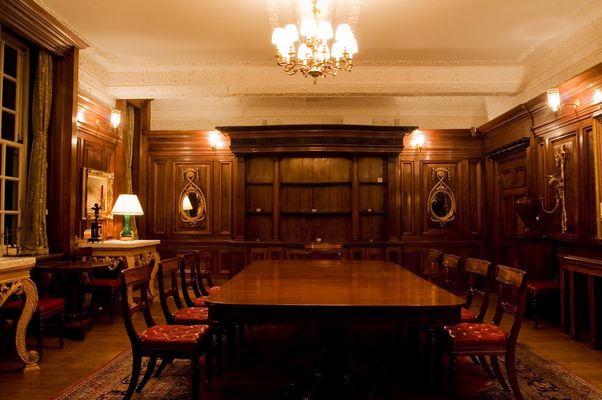3.2.1
Norman Government - Regents
Anglo-Saxon Government
Anglo-Saxon Government
The Anglo-Saxon system of government was different from the Norman system that replaced it. It is important to understand the key features of both systems.


The King
The King
- The king sat at the top of the social ladder and held absolute power. His powers included:
- Making new laws.
- Controlling the minting of new coins (creation of coins) and the circulation of these coins.
- Making people pay taxes.
- Executing God’s will on earth.
- Controlling land. In Anglo-Saxon times, the king controlled land, which he could give to his followers or take away from those who he felt had wronged him (or that he wanted to weaken).
- Raising the fleet and the army - known as the fyrd. This was a kind of casual militia raised when it was needed.


Earls
Earls
- Earls were the most senior nobles in England. The king gave them a significant amount of power.
- They governed large areas of land and collected taxes in their regions. They could keep a third of the taxes that they collected for themselves.
- They were in charge of enforcing law, crime and keeping their regions in order. The Earls had the power to judge who was guilty or not guilty of particular crimes.
- Earls were also generals and led the thegns (local lords) in wars against the king (or England)'s enemies.


The Witan
The Witan
- The Witan was the king’s council. It advised him on matters of state.
- The Witan advised the king but did not limit his power. He could ignore it if he wanted to.
- The king appointed those on the council.
The Regents
The Regents
William was the Duke of Normandy. Because of this, he spent a lot of time in France. He had 3 main regents.


Lanfranc
Lanfranc
- A regent would be in charge of England, whilst William was in Normandy (where he was the Duke).
- Lanfranc was the Archbishop of Canterbury.
- During the Earls' Revolt in 1075, Lanfranc was the person who was in charge of England and was tipped off by Waltheof.


Odo of Bayeux
Odo of Bayeux
- Regents were effectively William's deputies.
- Bishop Odo of Bayeux was one of William's regents when he first took over England in 1066.
- Bishop Odo was King William's half brother. Odo was also the Earl of Kent.


William FitzOsbern
William FitzOsbern
- William FitzOsbern was made the Earl of Hereford (one of the Marcher Earldoms) when William became King in 1066.
- FitzOsbern was not a good Regent and didn't handle relations between Normans and Anglo-Saxon locals very well.
1Anglo-Saxon England & The Norman Conquest, 1060-66
1.1Anglo-Saxon Society
1.2Edward the Confessor & The Succession Crisis
1.3The Rival Claimants for the Throne
2William I in Power: Securing the Kingdom, 1066-87
2.1Establishing Control
2.2Causes & Outcomes of Anglo-Saxon Resistance
2.3The Legacy of Resistance to 1087
2.4Revolt of the Earls, 1075
3Norman England, 1066-88
3.1The Feudal System & the Church
3.2Norman Government
3.3The Norman Aristocracy
Jump to other topics
1Anglo-Saxon England & The Norman Conquest, 1060-66
1.1Anglo-Saxon Society
1.2Edward the Confessor & The Succession Crisis
1.3The Rival Claimants for the Throne
2William I in Power: Securing the Kingdom, 1066-87
2.1Establishing Control
2.2Causes & Outcomes of Anglo-Saxon Resistance
2.3The Legacy of Resistance to 1087
2.4Revolt of the Earls, 1075
3Norman England, 1066-88
3.1The Feudal System & the Church
3.2Norman Government
3.3The Norman Aristocracy
Unlock your full potential with Seneca Premium
Unlimited access to 10,000+ open-ended exam questions
Mini-mock exams based on your study history
Unlock 800+ premium courses & e-books